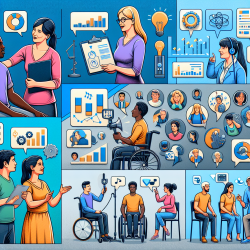Introduction
In the realm of educational and occupational success, the traditional focus has often been on general intelligence, commonly referred to as "g." However, recent research, such as the study "Non-g Factors Predict Educational and Occupational Criteria: More than g," highlights the significance of non-g factors. These factors, including specific math and verbal abilities, can play a crucial role in predicting educational and occupational outcomes. As a speech-language pathologist, understanding these non-g factors can enhance your practice and lead to better outcomes for the children you work with.
Understanding Non-g Factors
Non-g factors are specific abilities that remain after statistically removing the influence of general intelligence (g) from cognitive tests. The research by Thomas R. Coyle and others emphasizes two key non-g factors: non-g residuals and ability tilt. Non-g residuals are the variance left after g is removed from tests, while ability tilt refers to the within-subject differences between math and verbal scores, such as math tilt (math > verbal) and verbal tilt (verbal > math).
Why Non-g Factors Matter
Understanding non-g factors is crucial because they have been shown to predict diverse educational and occupational criteria. For instance, math residuals and tilt positively predict STEM-related outcomes, such as college majors and jobs, while verbal residuals and tilt predict humanities-related outcomes. This suggests that non-g factors have substantial predictive power beyond general intelligence.
Implications for Practitioners
As a practitioner, incorporating the insights from this research into your practice can lead to more tailored and effective interventions. Here are some practical steps you can take:
- Assess Specific Abilities: Consider evaluating specific math and verbal abilities in addition to general intelligence when assessing children's needs.
- Customize Interventions: Use insights from non-g factors to tailor interventions that align with a child's strengths and areas for growth.
- Encourage Exploration: Support children in exploring both STEM and humanities subjects to foster a well-rounded skill set.
Encouraging Further Research
While the current research provides valuable insights, it also highlights the need for further exploration. Future studies could examine how continued investment in specific abilities over time influences non-g effects and educational outcomes. As a practitioner, staying informed about ongoing research can help you refine your practice and contribute to the broader field of speech-language pathology.
Conclusion
The study of non-g factors offers a new perspective on educational and occupational success. By understanding and applying these insights, practitioners can enhance their practice and support children in achieving their full potential. To delve deeper into the original research, please follow this link: Non-g Factors Predict Educational and Occupational Criteria: More than g.










